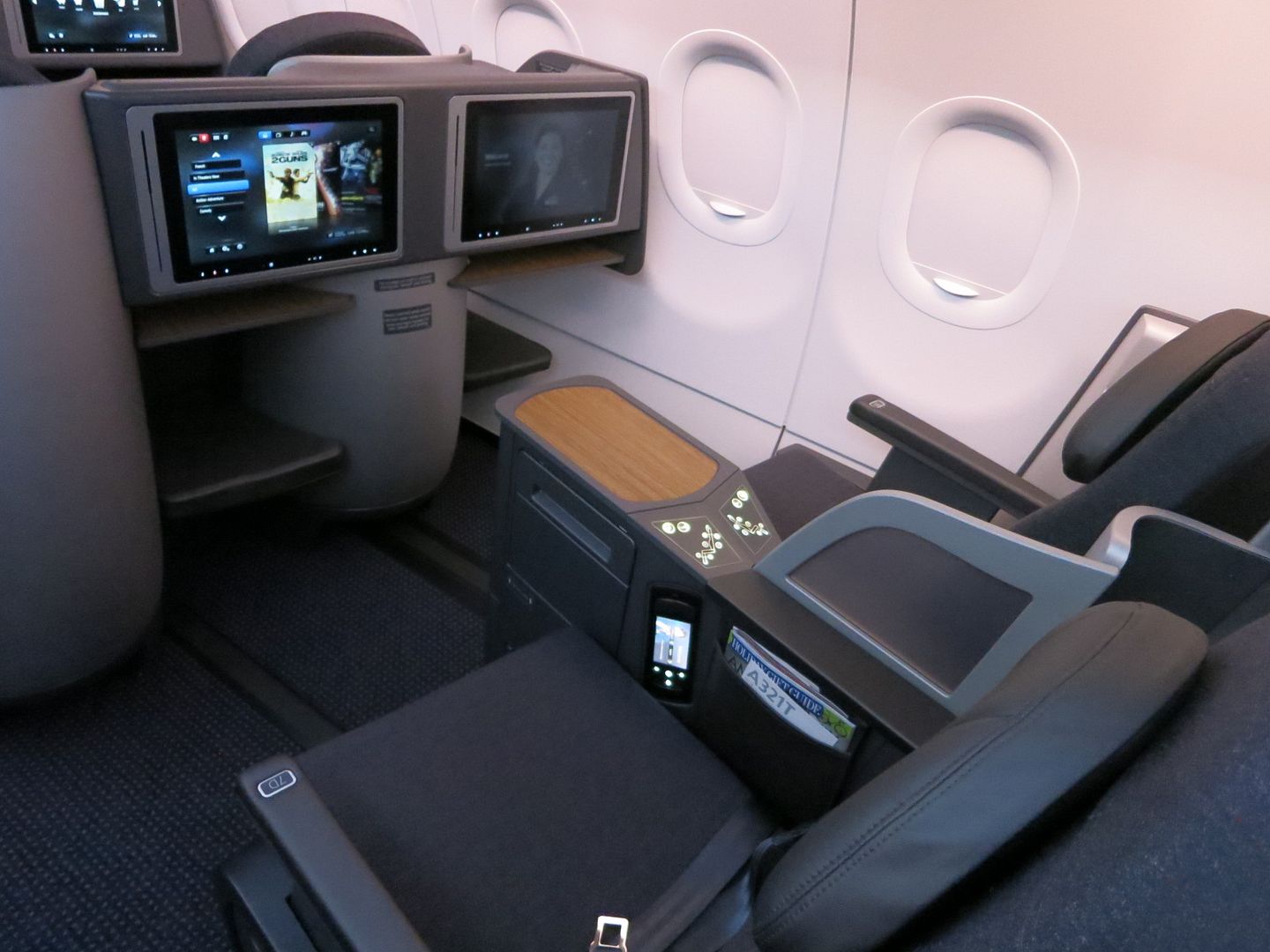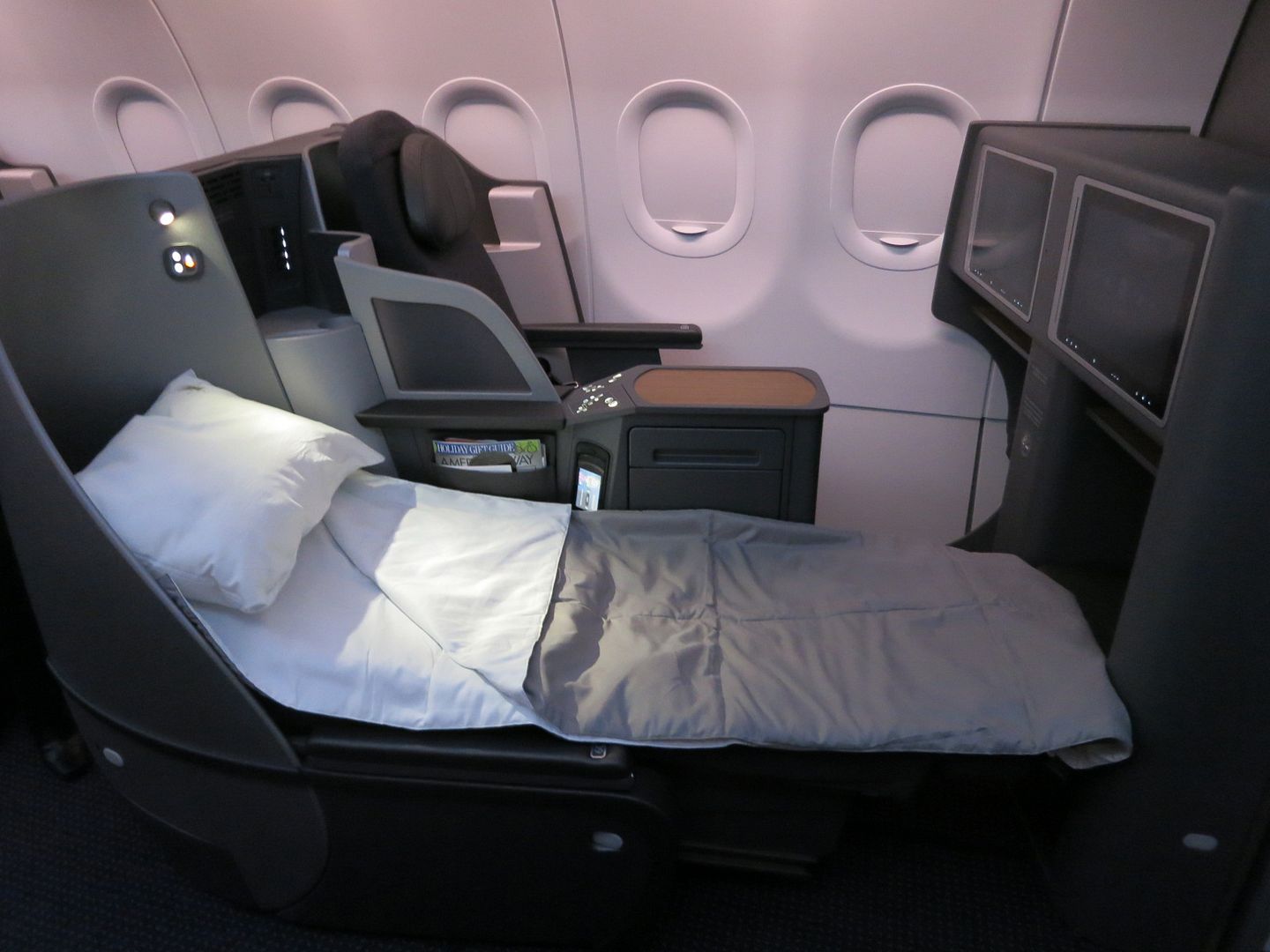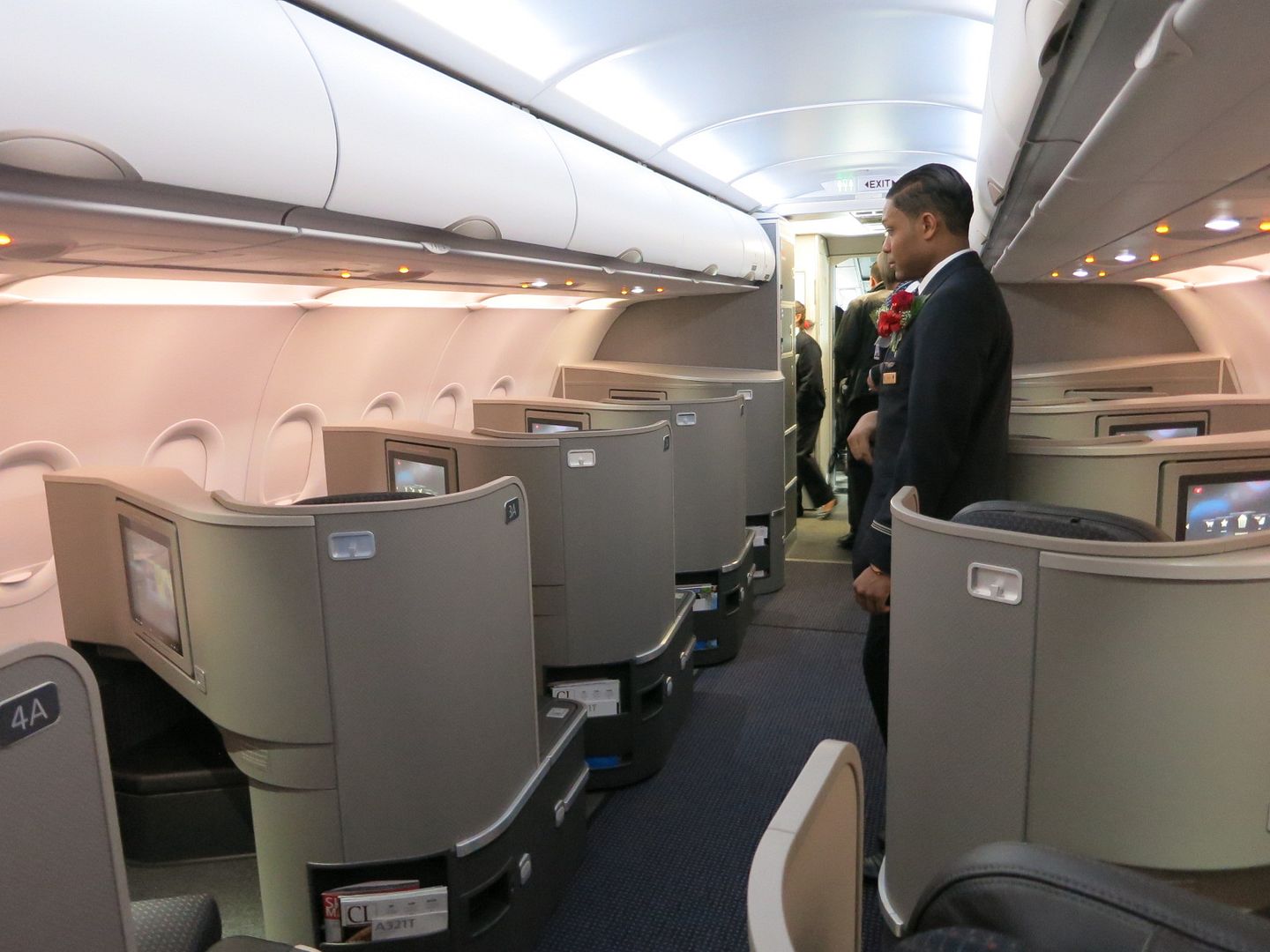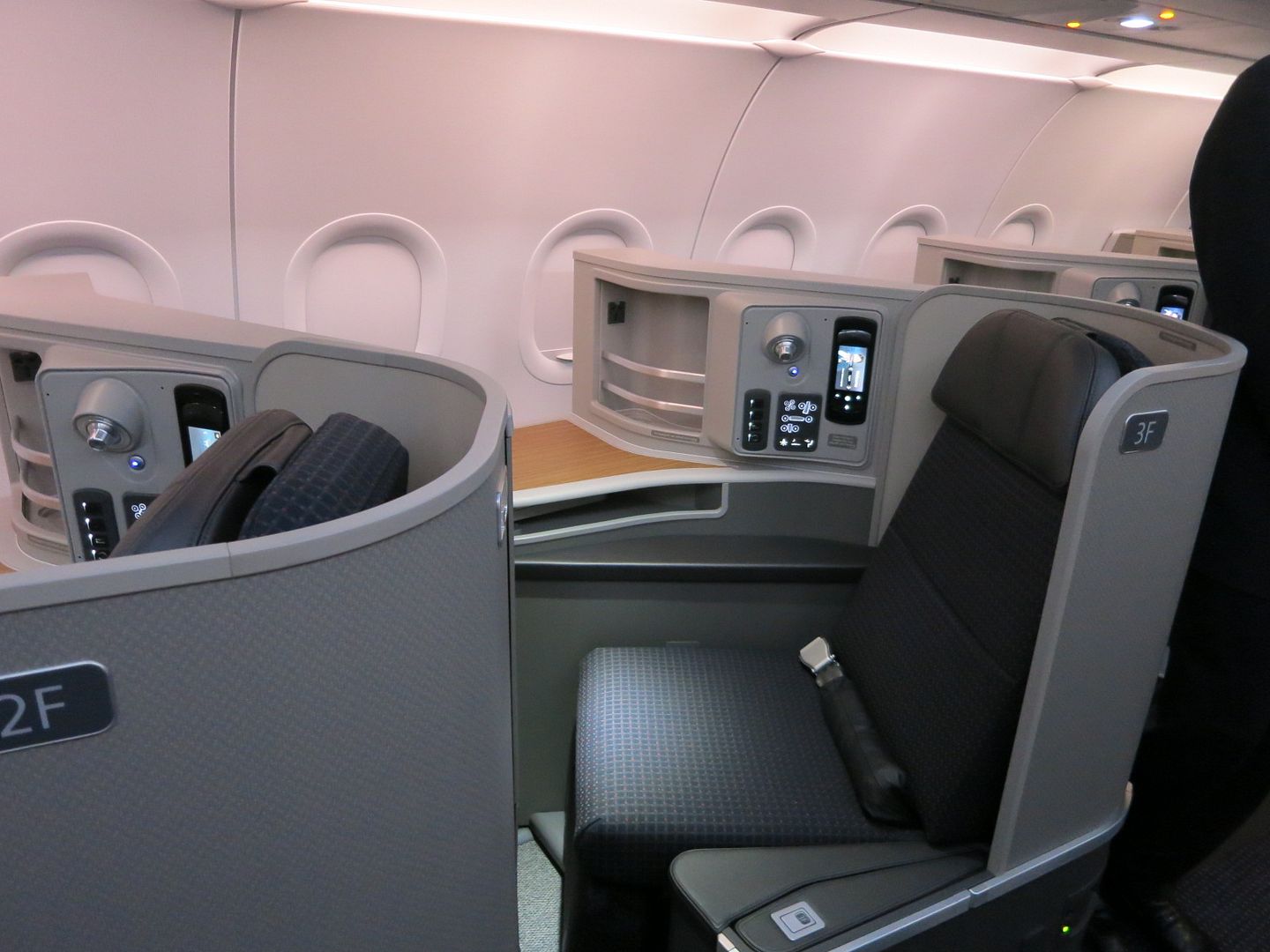Brian Sumers offers thoughts on why American continues to offer first class on premium transcon routes New York JFK – Los Angeles and New York JFK – San Francisco. They’re the only airline that continues to do so, even though these are the most premium-heavy routes in the country.
What I actually found interesting was the hedging by American on this question as opposed to the commitment that Sumers purports to explain. Here’s how he quotes a top American executive:
“The use of the first class product is waning industrywide, globally,” [Chief Marketing Officer] Andrew Nocella told me last month. “This is something that we wanted to study to make sure it makes financial sense. Given that we were about to fly the airplanes at the time, this is something we wanted to test and make sure it worked.”
…“This is something that will evolve over time, but I think so far, so good,” he said. “The economic experience for us on my plane has been excellent, and it’s something our customers want and are willing to pay for.”
(Emphasis mine.)
It’s no secret that the former US Airways management was skeptical of premium product investments generally, and three-cabin domestic first class in particular. This was certainly true when the service first launched two years ago.

American Airlines Airbus A321T at New York JFK
American Airlines offers economy, main cabin extra, business class, and first class on their narrowbody Airbus A321 “T” planes flying between the coasts.
Business class is very similar to United’s offering, and is two-by-two.


First class is five rows with one seat on either side of the cabin, so each seat is both a window and aisle and is essentially the international business class seat on American’s Boeing 777-300ER aircraft.


Coach, both with extra legroom and without, is of course coach.

The premium business class product makes sense. Competitors offer it — these are very product-competitive markets where Virgin America, which otherwise offers the best domestic first class product offers the worst one here — given that United, Delta and even JetBlue offer fully flat seats. Furthermore, these are perhaps the only routes which draws the sort of price premiums to justify the investment.
First class, because no one else is doing it, is either brilliant (no competition in that market) or foolhardy (everyone else knows something American seemed not to).
My own guess was that it made sense, but that:
- the 10-seat first class cabins are too large
- the product is better suited for New York JFK – Los Angeles than San Francisco (though offering different subfleets for each market is itself cumbersome and costly).
As the service launched the airline wouldn’t say unequivocally that it would stick around. One VP-level executive who came from the US Airways side told me they’d how it works but weren’t sure.
Of course they had a whole bunch of other priorities ahead of reconfiguring these planes. They’re a status good, and American has since really doubled down on their investment in Los Angeles — including focusing on LAX for international growth. This has surprised me because Los Angeles is such a contested market and historically US Airways management avoided head-on competition. Indeed, their New York strategy overall doesn’t appear to be to compete in business-heavy markets but rather to focus on bringing customers from other cities to New York (they lack service from their JFK hub to some key business destinations that are competitor hubs).
Indeed, American just added a Sydney flight (with an improved inflight service). They’re adding Auckland, New Zealand. And they’re adding Tokyo Haneda service. And those are all international routes that face competition.
The theory American articulated at the time of launch for three-cabin domestic first class on premium cross country routes was that in addition to Hollywood studios and celebrities, joint business venture partner Japan Airlines (especially, but also Cathay Pacific brings) them first class passengers who come into the country on the West Coast, depart from the East Coast, or vice versa — and want to fly first class in between. I was skeptical how big that market was.
Now that much of the heavy lifting of airline integration between US Airways and American is behind us (though they still need a single pilot seniority list among other challenges to fully integrate operationally), it will be interesting to see how the route “will evolve over time” as Nocella put it.


With the reduction of VIPs for ExPlat from 8 to 4 I’m sure people who might have splurged 1 or 2 on a transcon upgrade will hold them for better use making the cabin too large by yet that much more.
I think three cabin Transcon is history.
Having flown the A321T’s fairly regularly over the last year, I’ve noticed that business class is almost always full while first sits around half empty. Undoubtedly a lot of the business seats are taken by AA elites getting upgraded (as an ExPlat I get the upgrade about 50% of the time on this route so it’s not an easy upgrade) so it’s hard to say what the actual monetization is of business versus first. But my guess is if they replaced the first class cabin with more business seats, they’d have little trouble filling them.
First Class is just about all that’s left to differentiate American
Their food sucks worse than in 2000 when it was at least decent even in First on the trans cons
Their FF program is soon to be toast and the soon to be dreaded revenue based program
Redeeming is too difficult with stingy avail of award seats
And they no longer take care of customers who are elite when problems occur
Customer Relations now act as if terrible issues are just the expected travel experience
As I approach 9 million miles on AA I’m considering leaving now that the
US Air culture has started on the once solid American past
I expect more horrible results from these evil greed mongers
Would be hard to cut First in half and put extra rows of Business just behind it. That’s probably step 2, unless First is really doing poorly.
One wonders hom many more changes will happen as more and more leisure travelers enter the markets because of the millions of baby boomers who have just tipped the iceberg of retirement. They can fly at any off peak time and fill the seats. This could drive the fares way up based on supply and demand and those free status business class upgrades could be a thing of the past. Many baby boomers will have the money to pay for those seats. Ten years from now the travel world will be in a different mode. So enjoy the perks today while they last.
Judging by the consistent offers to upgrade to first on these routes for $200 (from paid business) and the fairly steady availability of awards in first, it’s obvious it’s not doing that well. In my opinion, it’s more a problem of product differentiation than it is demand. There is almost no difference between the two soft products (and only minor differences in the hard product) so why should someone shell out hundreds if not thousands more for first? I also agree that 10 seats is way too many.
My experience flying the LAX route in both directions and in both cabins (including Red Eyes) has been full loads in F and J. There will always be a demand for exclusivity and unless celebs and studio execs fly private, they want that single seat (and the special “chamber” for their doggie companion). AA has advertised heavily within the entertainment industry regarding this service and the investment seems to have paid off. (Why else would UA decide to move from JFK…it’s lost that portion of the premium transcon market to AA and DL who still fly out of NYC and not Jersey?)
While it may be true overall the demand for paid F on many routes no longer justifies the cabin and we see this on the configuration of fleets by both AA and UA…but there are still a couple of routes where F will have a demand and will pay for itself, if not generate a healthy profit. Even the US management will recognize this and maintain the cabin on prime routes, foreign and domestic.
Since we’re down to eight seats in A/F trains-Atlantic, seems four is probably the right number trams-con.
What I find amusing are the so called frequent Travellers that continually BASH any Airline that makes Any Changes in seats, routes, menus etc. The 321T is a Great Product…..probably is You Want It , You are Going to Pay for It. Airlines are Public Companies…..they Know Most Loyal Ydrs in 2016 are only Loyal when it Suits Them…..freebies, upgrades, etc. For all You armchair CEOs…. Start your Own Airline and let Me Be the Critic. STOP the bellyaching Cheapskates!
A321T is not a great aircraft, it is cramped, hot and the service isn’t as good as it was when the widebodies flew the route, but when Airbus wants a deal, they throw in the kitchen sink. 5 rows of F is too much, cut it down to 4, open the front galley up to allow the FA’s room to work and being about to serve a proper F product. Do the same for J, cut a row out too. AA should have refurbished some 757 instead of going with airbus…
@Tony – LOL? You don’t like the A321T but prefer the 757? What does the 321 have to do with it being hot in the cabin, and getting poor service? Consider yourself the first person who seems to prefer narrower seats i guess…